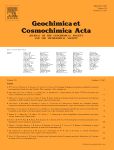Heidari et al., 2017
A reactive transport model for Marcellus shale weathering
Heidari, P., Li Li, Lixin Jin, Jennifer Z. Williams, and Susan L. Brantley (2017)
Geochimica et Cosmochimica Acta, 217:421-440
-
Shale Hills, INVESTIGATOR
-
Shale Hills, INVESTIGATOR, COLLABORATOR
-
Shale Hills, STAFF
-
National, Eel, Luquillo, Shale Hills, INVESTIGATOR, COLLABORATOR
Abstract
Shale formations account for 25% of the land surface globally and contribute a large proportion of the natural gas used in the United States. One of the most productive shale-gas formations is the Marcellus, a black shale that is rich in organic matter and pyrite. As a first step toward understanding how Marcellus shale interacts with water in the surface or deep subsurface, we developed a reactive transport model to simulate shale weathering under ambient temperature and pressure conditions, constrained by soil and water chemistry data. The simulation was carried out for 10,000 years since deglaciation, assuming bedrock weathering and soil genesis began after the last glacial maximum. Results indicate weathering was initiated by pyrite dissolution for the first 1000 years, leading to low pH and enhanced dissolution of chlorite and precipitation of iron hydroxides. After pyrite depletion, chlorite dissolved slowly, primarily facilitated by the presence of CO2 and organic acids, forming vermiculite as a secondary mineral.
A sensitivity analysis indicated that the most important controls on weathering include the presence of reactive gases (CO2 and O2), specific surface area, and flow velocity of infiltrating meteoric water. The soil chemistry and mineralogy data could not be reproduced without including the reactive gases. For example, pyrite remained in the soil even after 10,000 years if O2 was not continuously present in the soil column; likewise, chlorite remained abundant and porosity remained small if CO2 was not present in the soil gas. The field observations were only simulated successfully when the modeled specific surface areas of the reactive minerals were 1–3 orders of magnitude smaller than surface area values measured for powdered minerals. Small surface areas could be consistent with the lack of accessibility of some fluids to mineral surfaces due to surface coatings. In addition, some mineral surface is likely interacting only with equilibrated pore fluids. An increase in the water infiltration rate enhanced weathering by removing dissolution products and maintaining far-from-equilibrium conditions. We conclude from these observations that availability of reactive surface area and transport of H2O and gases are the most important factors affecting rates of Marcellus shale weathering of the in the shallow subsurface. This weathering study documents the utility of reactive transport modeling for complex subsurface processes. Such modelling could be extended to understand interactions between injected fluids and Marcellus shale gas reservoirs at higher temperature, pressure, and salinity conditions.
Citation
Heidari, P., Li Li, Lixin Jin, Jennifer Z. Williams, and Susan L. Brantley (2017): A reactive transport model for Marcellus shale weathering. Geochimica et Cosmochimica Acta, 217:421-440. DOI: 10.1016/j.gca.2017.08.011
 This Paper/Book acknowledges NSF CZO grant support.
This Paper/Book acknowledges NSF CZO grant support.
Explore Further





